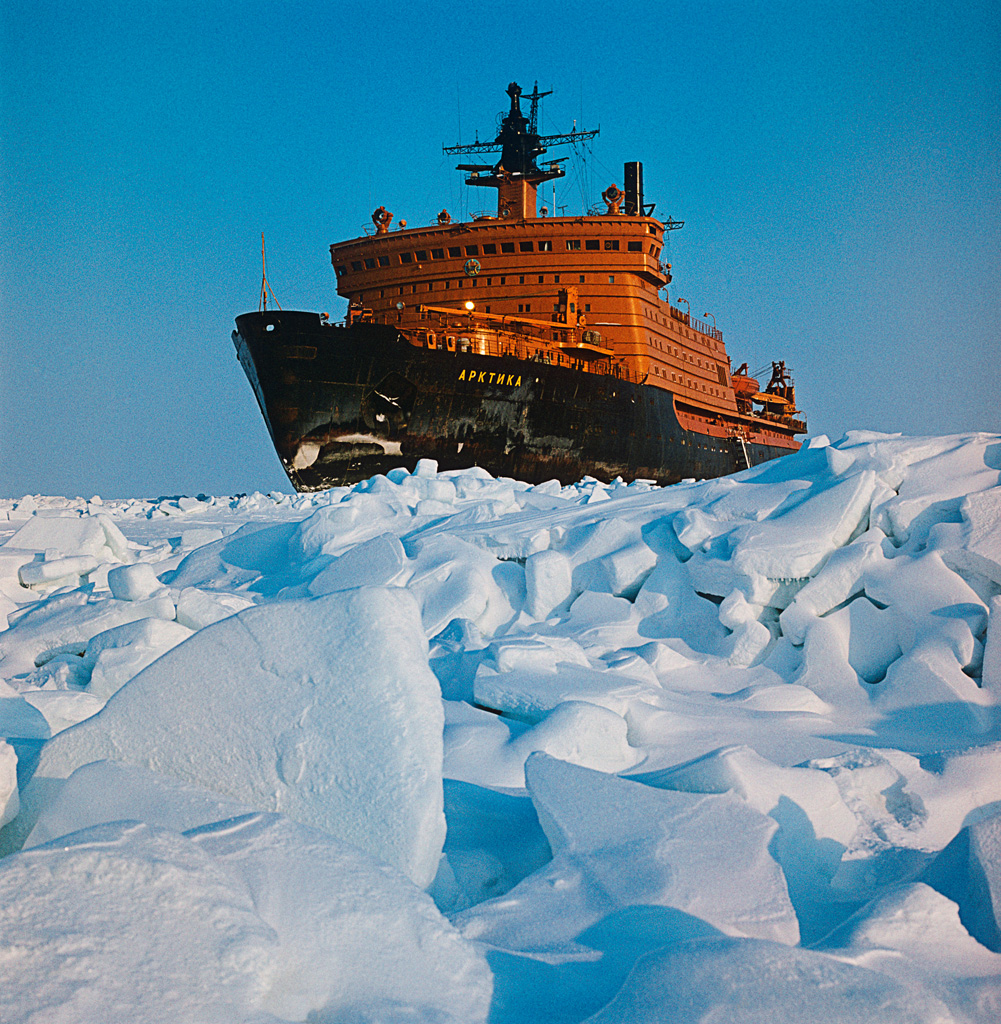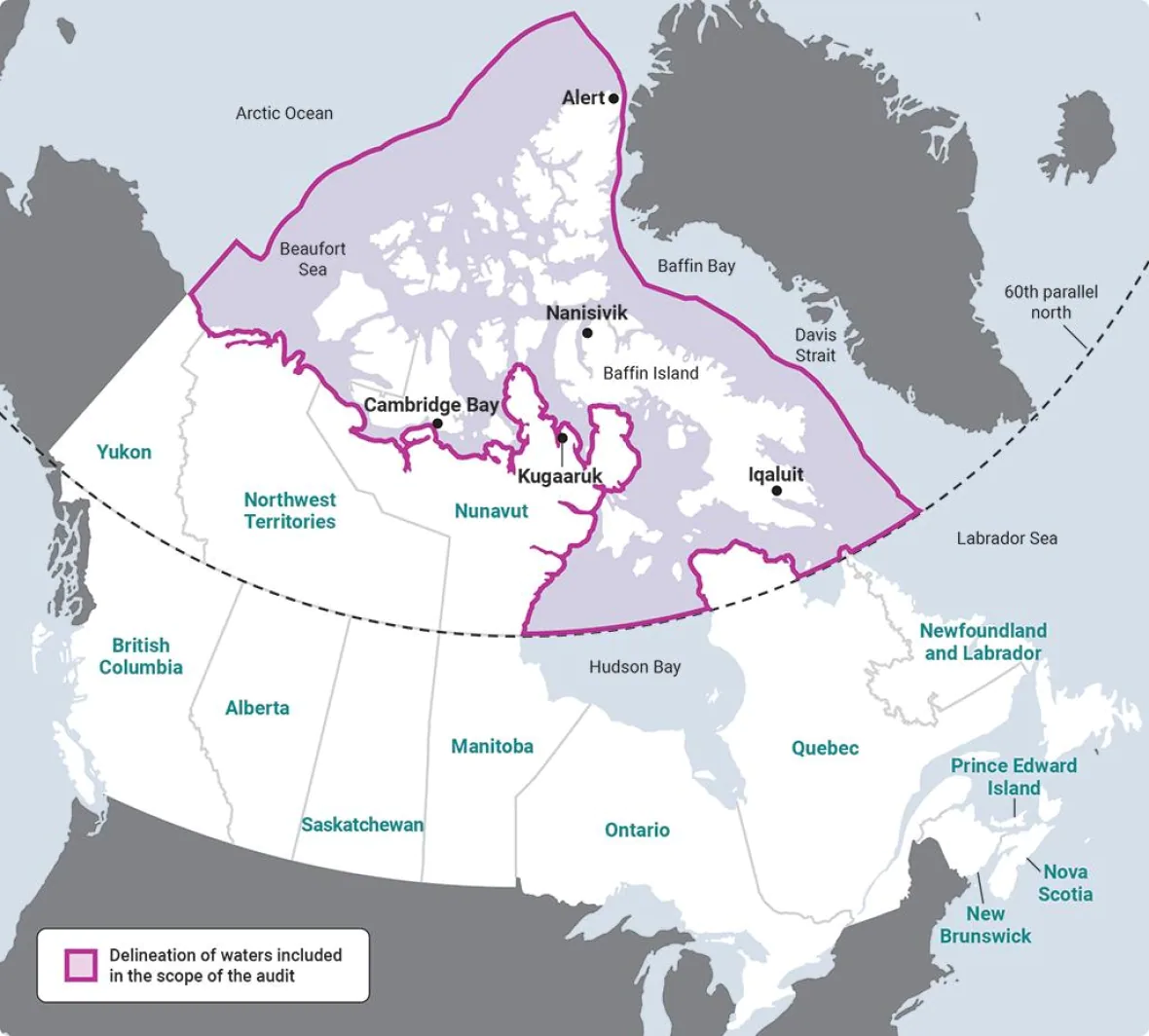
The Yevpatii Kolovrat is the second of the Russian navy’s new class of icebreakers. [mil.ru]
But the route the Yevpatii Kolovrat navigated in mid-May has raised some eyebrows.
Instead of traversing Arctic waters from the St. Petersburg shipyard where it was built, the ship sailed out into the Atlantic and south to the Mediterranean Sea. It then passed through the Suez Canal and crossed the Indian Ocean into the Philippine Sea before it arrived at its home port in Petropavlovsk in the North Pacific. The route is easily twice as long as the northern passage to Kamchatka.
Why would Russia’s newest icebreaker not sail the Arctic waters for which it was intended? The answer: heavy ice.
Data from the Russian Arctic and Antarctic Research Institute showed a thick layer of sea ice covering Russian Arctic waters in early May. In the Laptev and East Siberian seas, two belts of multi-year ice were considered impassable, even by the vaunted Russian ship named for a 13th century war hero.
Canada’s federal auditor general reported in November 2022 that average summer sea-ice coverage in the Canadian Arctic had dropped by about 40 per cent in the last 50 years due to climate change, but lately it has been longstanding sea ice, not the seasonal variety that comes and goes, that has impeded Arctic traffic.
The effects of a warming climate on multi-year ice, some of which has built up over decades or even centuries, are unpredictable. Averaging three to four metres thick, banks of multi-year ice break up and move as temperatures rise, then get stuck in shallower waters or run up against seasonal ice, sometimes forming mountainous ridges.
Yevpatii Kolovrat, only capable of breaking through ice 1.5 metres thick, is not the only ship to avoid the northern trip in recent months. Issues with multi-year ice have prevented most vessels from transiting Arctic waters since October 2022.
The Barents Observer reports the only exceptions are a few liquid natural gas carriers—powerful ice-breaking tankers transporting the fuel from Sabetta on the Yamal peninsula to ports in China with the help of nuclear icebreakers. The Russian tanker Boris Vilkitsky, for one, sailed from Tianjin, China, to Sabetta in January, aided by the nuclear icebreaker Arktika, a 148-metre, 20,000-ton behemoth.
The Yevpatii Kolovrat is expected to significantly boost Russian naval capacity in far-northern waters, escorting warships on patrols along Russia’s Arctic coast and supplying Moscow’s growing number of remote Arctic naval bases.

Russia’s nuclear-powered icebreaker Arktika sails the Kara Sea. The original Arktika-class ships were the world’s largest and most powerful icebreakers until the 2016 launch of the first Project 22220 icebreaker, also named Arktika. [Wikimedia.]
With its Arctic sovereignty at stake, the issue of Arctic-capable patrol ships has been front-and-centre in Ottawa.
Canada has no such ships as the Arktika. With its Arctic sovereignty at stake, the issue of Arctic-capable patrol ships has been front-and-centre in Ottawa.
Prime Minister Justin Trudeau announced in April that Quebec shipyard Chantier Davie was being formally asked to build seven icebreakers for the Canadian Coast Guard at an estimated cost of $8.5 billion. The project will take years; the timing of deliveries not known.
“Negotiations have begun with Chantier Davie on contracts to support the construction of six program icebreakers and one polar icebreaker for the Canadian Coast Guard,” Procurement Department spokeswoman Michele LaRose told The Canadian Press at the time.
“With respect to timelines and costs, the exact build schedule and cost will be negotiated and finalized during the individual contract negotiations.”
In a report covering April 2021-March 2022, Auditor General Karen Hogan said Canada has been, and continues to be, ill-prepared for marine traffic in the Arctic as the number of voyages in the area more than tripled from 1990 to the onset of the COVID-19 epidemic in 2019, when Ottawa imposed temporary shipping bans.
Hogan said increased accessibility to the Canadian Arctic is generating opportunities for mining, commercial fishing and tourism, and international interest and competition in the region is rising accordingly. Along with it comes the risk of unauthorized or unregulated vessel transits and illegal activities, she warned.
Transport Canada and the Canadian Coast Guard aren’t ready for the challenges posed by the rises in shipping and economic development as climate change continues to open Arctic waters.A map shows the boundary of Canadian Arctic waters. [Office of the Auditor General of Canada.]
The U.S. Geological Survey has estimated that 30 per cent of the world’s untapped gas reserves (108 trillion cubic feet), 13 per cent of its oil reserves (about 90 billion barrels) and $1 trillion in minerals lie in the Arctic.
“The surveillance of Arctic waters is complex,” wrote Hogan. “The territory is vast and isolated, and its climate is harsh. Waters are largely not charted to modern or adequate standards.”
She said the Canadian authorities responsible for safety and security in the region don’t have a clear picture of its traffic. Transport Canada and the Canadian Coast Guard aren’t ready for the challenges posed by the rises in shipping and economic development as climate change continues to open Arctic waters, she said.
“We concluded that the federal organizations we audited…had not taken the action required to build the maritime domain awareness they collectively needed to respond to safety and security risks associated with increasing vessel traffic in Arctic waters. While these organizations had identified gaps in maritime domain awareness, they had not taken sufficient measures to address them.
“Moreover, some measures taken had progressed slowly and, in the case of the Marine Security Operations Centres, were not efficient. Furthermore, the existing satellite services and infrastructure did not provide the capacity that the federal organizations needed to perform surveillance of Arctic waters. Delays in the renewal of satellites, ships, and aircraft risks compromising the presence of these organizations in Arctic waters.”
Rising Arctic interest includes strategic and military ambitions, she noted, and Ottawa’s decisions about surveillance of Arctic waters today may have long-term effects on Canadian sovereignty.
“It’s very disappointing after so many years there’s been little moving forward in any strong way,” Pierre Leblanc, an Arctic security consultant and commander of the Canadian Forces’ Northern Area from 1995-2000, told CBC.
“I knew we were weak in a number of areas but when you do the aggregate of what’s mentioned in the report, it is somewhat alarming. Basically it says that Canada doesn’t really have a good understanding of what’s going on in the Arctic.”
The Canadian Arctic spans three territories, extends to the North Pole, and encompasses 75 per cent of the country’s coastlines and 40 per cent of its land mass. Eight nations, including Canada, the U.S. and Russia, have mounted contesting Arctic sovereignty claims.

The Yevpatii Kolovrat left St. Petersburg, sailed through the Gulf of Finland into the Baltic Sea and, rather than head north through Arctic waters to the Kamchatka Peninsula, it went south through the Mediterranean, the Suez Canal, Indian Ocean and Philippine Sea into the North Pacific.
[Google Maps/Legion Magazine]
Advertisement



















